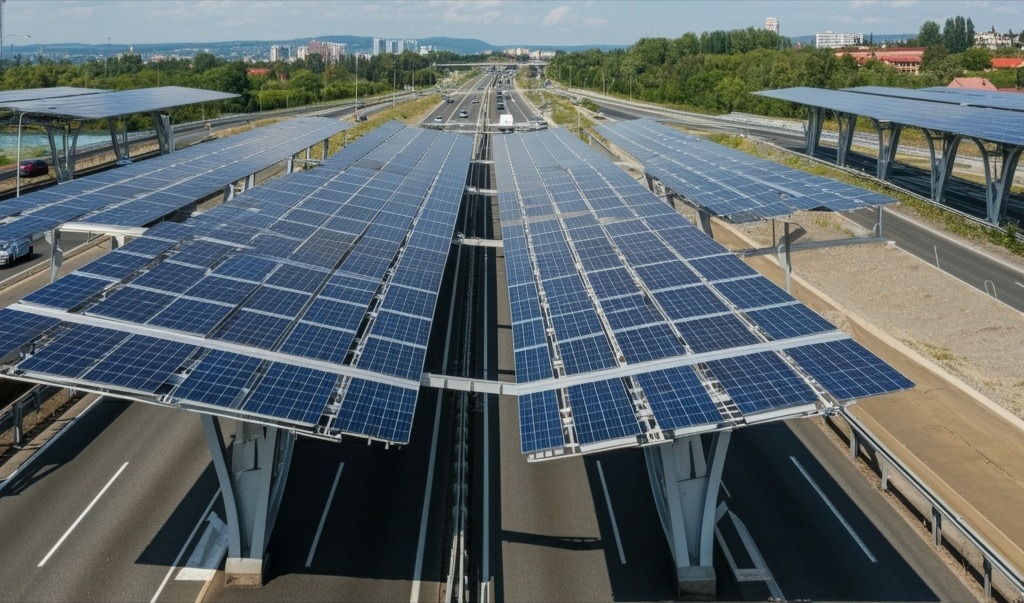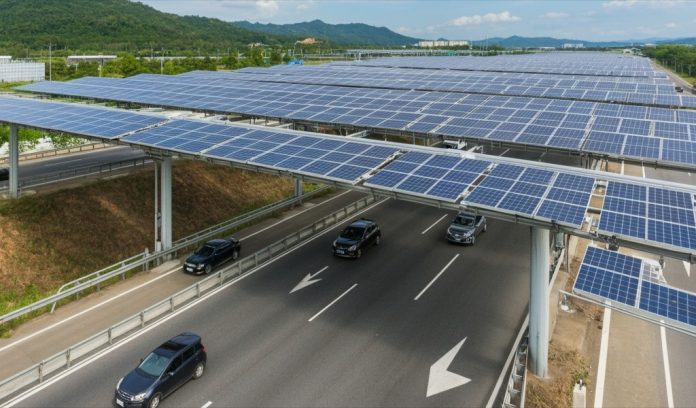Recent research suggests that installing solar panel roofs over highways worldwide could substantially lower carbon dioxide emissions and enhance road safety.
The study explored the potential benefits of this innovative approach. By reducing the need for fossil fuels, solar panel roofs could cut global carbon emissions by nearly 28%.
Harnessing solar energy on highways
The concept involves elevating solar panels above highways and major roads, which would not only generate electricity but also provide protection from harsh weather.
Ling Yao, a remote sensing scientist at the Chinese Academy of Sciences and the study’s lead author, highlights the immense potential of this idea. “Covering Earth’s highways with solar roofs could generate 17.58 petawatt hours of electricity per year, equivalent to more than 60% of the world’s total electricity consumption in 2023.”
Solar photovoltaics have become a significant part of new renewable energy installations, making up 40% between 2012 and 2021.
As the cost of solar technology continues to fall, innovative projects like Yao’s could drive the transition to sustainable energy sources.
Maximising existing infrastructure
Utilising the extensive network of global highways for solar energy production offers a practical solution to reduce greenhouse gas emissions.
There are over 3.2 million kilometres of highways worldwide, which, if covered with solar panels, could significantly boost renewable energy output.
While solar-roofed parking lots are becoming more common, large-scale photovoltaic highways are still in the early stages.
A few countries have initiated pilot projects to demonstrate the potential of this technology, but extensive solar highway systems remain a goal for the future.
The researchers evaluated the cost and feasibility of building solar panel roofs over highways and major roads in different regions.
They proposed using polysilicon photovoltaic panels with a 250-watt maximum power generation capacity, angled at 10 degrees towards the outer lanes of highways.
Environmental and safety benefits
Covering highways with solar panels would require approximately 52.3 billion solar panels, capable of generating up to 17,578 terawatt-hours of electricity annually.
This amount is over four times the annual energy production of the United States. Additional panels over major arterial roads could produce another 13,570 terawatt-hours per year.

The cost and energy generation potential would vary by location, with densely populated areas like eastern China, western Europe, and the US East Coast being prime candidates for initial implementation.
This initiative could replace the equivalent of 9.66 gigatons of carbon dioxide emissions annually, comparable to two-thirds of the US greenhouse gas emissions in 2022.
Beyond environmental benefits, solar highway roofs could also enhance road safety by reducing traffic accidents by 10.8%, particularly in areas with high precipitation.
Shielding drivers from rain and snow would improve driving conditions and reduce the economic impact of traffic accidents.
Future challenges
Despite the promising potential, the implementation of solar panel roofs on highways faces several challenges, including high installation and maintenance costs. Practical issues, such as cleaning the vast number of solar panels, also need to be addressed.
Yao is optimistic that the success of small-scale pilot projects will encourage broader adoption. He envisions that countries with long, flat stretches of highways, such as those in the southwestern United States, could lead the way in implementing large-scale solar panel roofs over highways.









